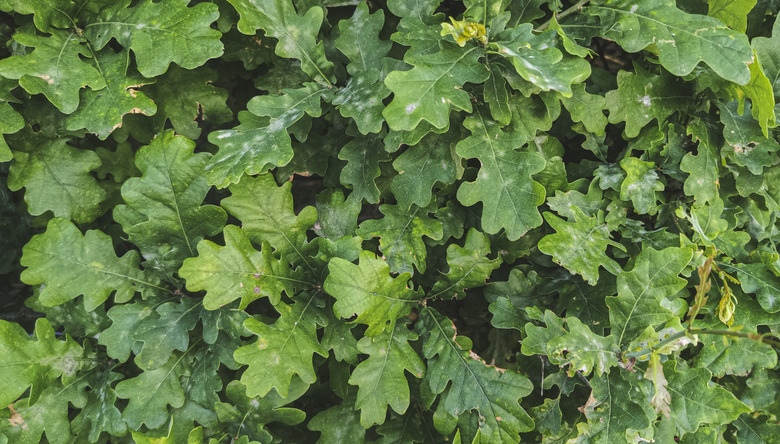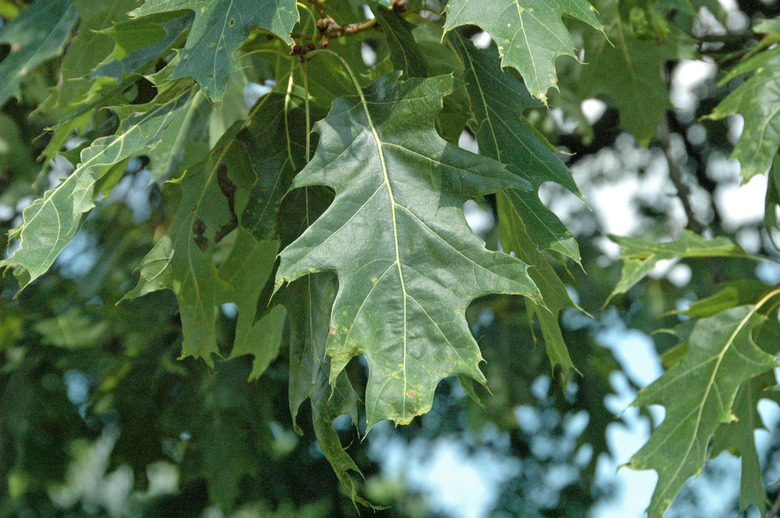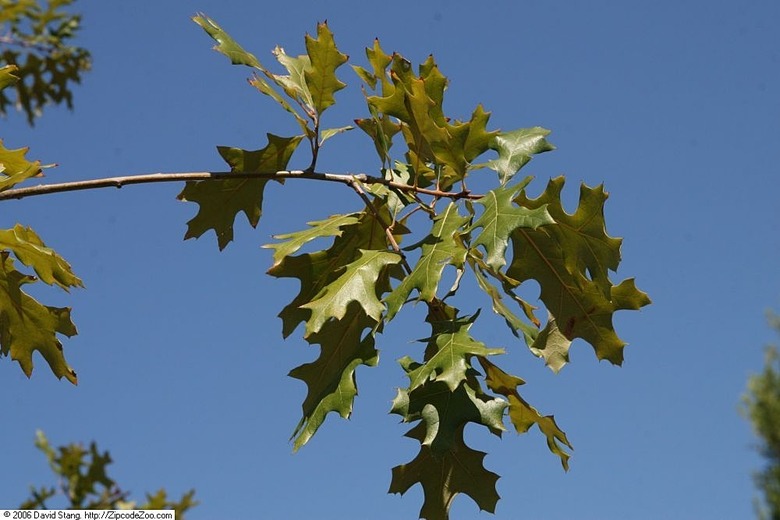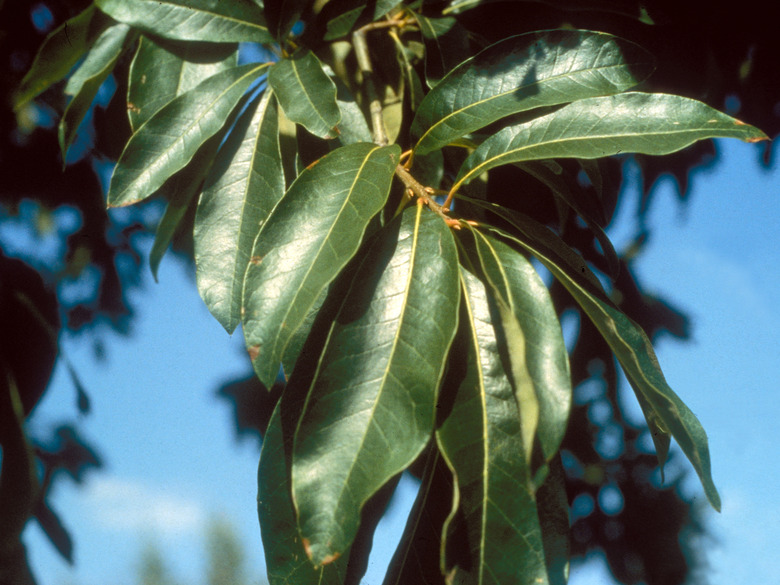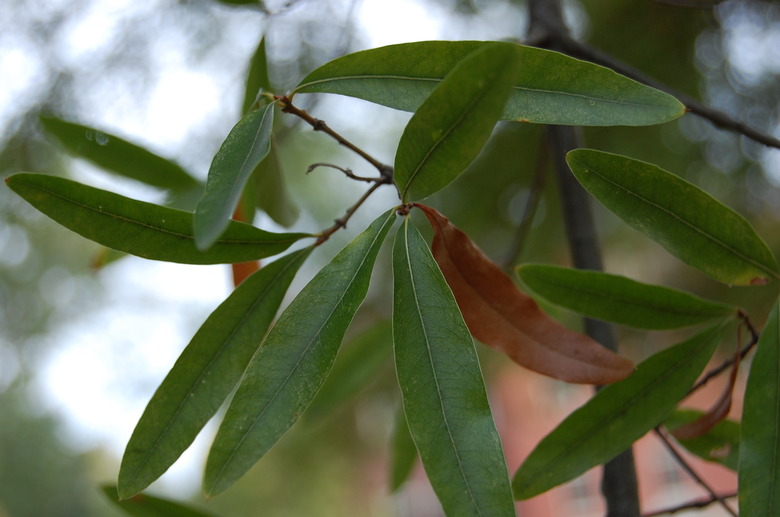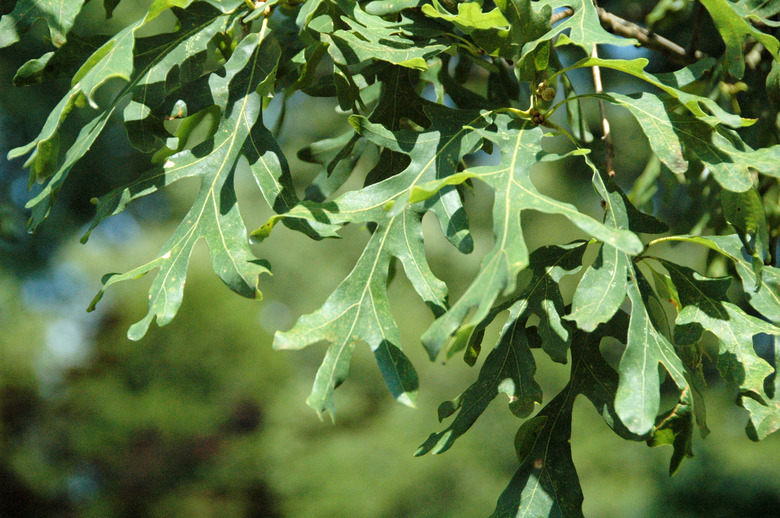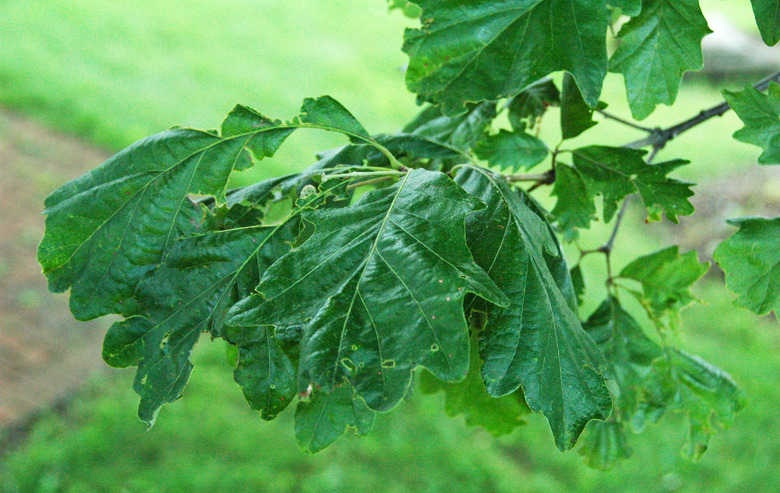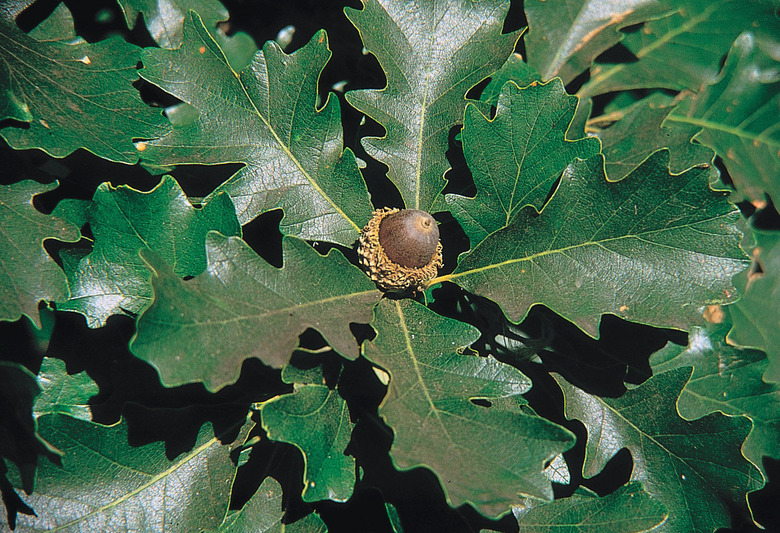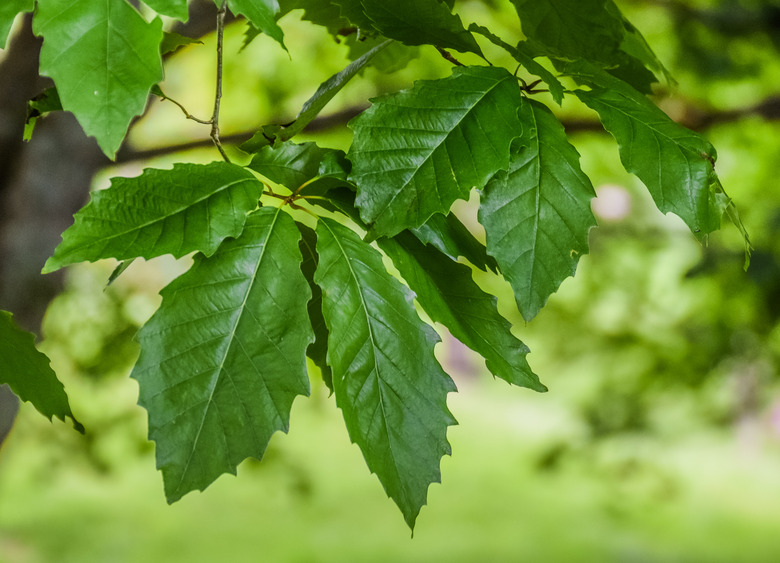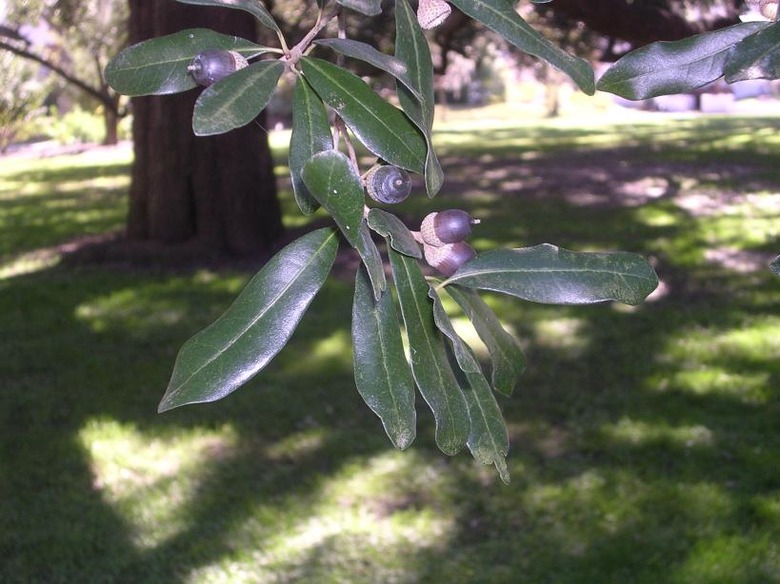How To Identify Oak Trees By Their Leaves
There are approximately 450 species of oak trees (Quercus spp.) that occur in temperate areas around the globe, of which about 60 are native to North America.
Oak tree leaves can be used for species identification. To identify an oak tree by leaf, note the size of the leaf, the shape and depth of the lobes and the number of lobes and match these features to species using online identification tools.
Oak Tree Identification by Leaves
Oak trees are divided into two groups, red oaks and white oaks, depending on several characteristics, including leaf shape. White oak tree leaves have lobes with rounded tips, while the red oak tree leaves have lobes that come to a sharp point.
Therefore, by looking at the shape of the lobes, you can determine if you are looking at a white oak or a red oak, which helps to narrow down the possibilities.
Red Oak Tree Leaf Identification
While all red oak trees have sharp, pointy lobes, not all species have identical-looking leaves. Let's review some of the most common red oak species in North America and the characteristics of their foliage.
Northern Red Oak
The leaves of the northern red oak (Quercus rubra, zones 4 to 8), a species native to the Eastern U.S., are dark green and glossy with a grayish-white underside. This species has 7 to 11 sharp lobes per leaf.
Black Oak
The leaves of the black oak tree (Quercus velutina, zones 3 to 9) are dark green with a leathery texture. The leaves of this species have seven to nine deep lobes. Each black oak leaf lobe has between one and three teeth-like bristles.
Shingle Oak
Native to the American Midwest, primarily the Ohio River Valley, the shingle oak (Quercus imbricaria, zones 5 to 8) has unlobed leaves unlike other oak leaf types, making it one of the easiest species to identify. The narrow, oblong-shaped leaves are a glossy dark green with smooth edges.
Willow Oak
As its common name suggests, the willow oak (Quercus phellos, zones 5 to 9) has leaves reminiscent of willow trees. The leaves are narrow and long and have smooth margins. Each leaf has a length between 1 and 4 inches.
White Oak Tree Leaf Identification
Now, let's take a look at some North American white oak species and the features that distinguish their leaves.
White Oak Tree
The leaves of the white oak tree (Quercus alba, zones 3 to 9), a popular shade tree, may be 4 to 9 inches long and have seven to nine deep lobes. The leaves are pink in color when they first emerge but turn a dark green as they age.
Swamp White Oak
Found in moist areas around streams and valleys in the Northeastern U.S., the swamp white oak (Quercus bicolor, zones 3 to 8) has dark green leaves with silver undersides. Each leaf may have five to 10 lobes with rounded tips. Unlike the lobes of the leaves of white oaks, the lobes of swamp white oak leaves are not very deep and may look more like teeth.
Bur Oak
Also known as the mossycup oak, the bur oak (Quercus macrocarpa, zones 3 to 8) has leathery leaves with five to nine lobes. One or two of the sinuses—the space between lobes—are deeper than the rest and reach almost the center, or midrib, of the leaf.
Chinkapin Oak
The chinkapin oak (Quercus muehlenbergii, zones 5 to 7) does not have lobed leaves, which might lead you to overlook it as an oak. Rather, the leaves have toothed margins with eight to 13 teeth per leaf. The leaves of this variety of oak may be 4 to 7 inches long.
Live Oak Tree Identification
While many oak trees are deciduous, meaning they shed their leaves come autumn, some oak tree species are considered evergreen. This is because they keep their leaves year round, which is also helpful for oak tree leaf identification.
In the U.S., the most common evergreen oak is the live oak (Quercus virginiana, zones 8 to 10), which has oval or elliptical leaves that are about 5 inches long. The leaves of live oak trees may have smooth or spiny margins.
References
- Britannica: Oak
- Utah State University Extension: Oaks in the Landscape
- Missouri Botanical Garden: Quercus imbricaria
- Missouri Botanical Garden: Quercus rubra
- Missouri Botanical Garden: Quercus velutina
- Iowa State University Extension and Outreach: Chinkapin Oak
- Missouri Botanical Garden: Quercus muehlenbergii
- Missouri Botanical Garden: Quercus virginiana
- Missouri Botanical Garden: Quercus alba
- Missouri Botanical Garden: Quercus phellos
- Missouri Botanical Garden: Quercus bicolor
- Missouri Botanical Garden: Quercus macrocarpa
